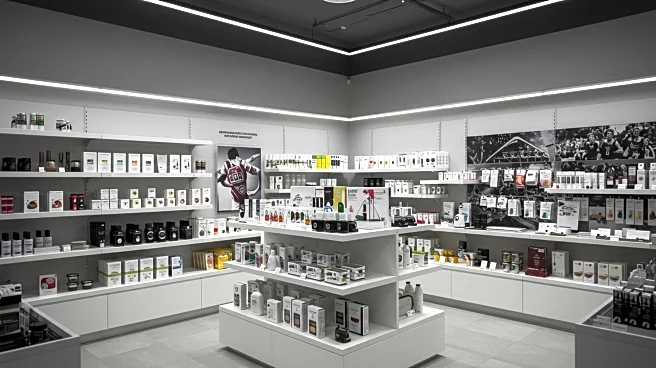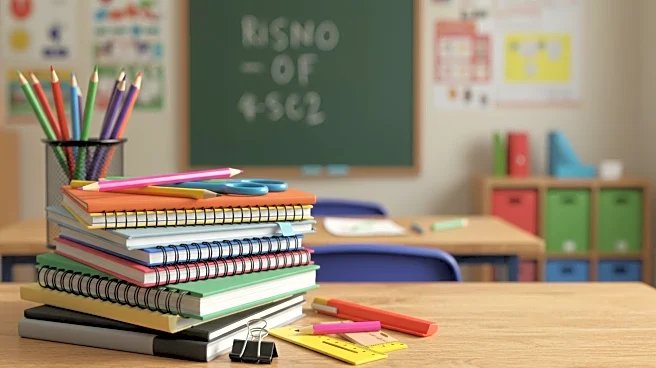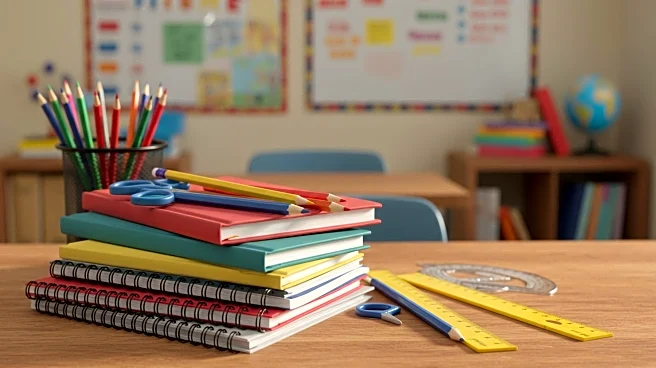Rapid Read • 7 min read
As the back-to-school season progresses, parents and students are experiencing varied pricing on school supplies due to recent tariff changes. Retailers like Amazon, Walmart, and Target are adjusting prices in response to tariffs as high as 50% on certain imported goods. This has led to an effective tariff rate of 18.6%, the highest since 1934. NBC News, in collaboration with Bright Data, is tracking online prices for approximately 30 back-to-school items to monitor these fluctuations. Notably, prices for journals and notebooks have seen significant increases, with some products jumping nearly 100% in price. Despite these changes, some items have decreased in price due to promotional sales, and retailers are attempting to mitigate the impact of tariffs by managing inventories strategically.
AD
The tariff-induced price changes are significant as they affect consumer spending and retail strategies during a critical shopping period. With tariffs impacting goods from countries like China, consumers are facing higher costs, which could influence purchasing decisions and overall spending. Retailers are absorbing some of the tariff costs to remain competitive, but consumers are expected to bear a larger share of these costs in the future. This situation highlights the broader economic implications of trade policies and their direct impact on consumer markets. As families anticipate spending over $800 on back-to-school items, the economic burden could shift purchasing habits towards more cost-effective options, such as store-brand products or secondhand items.
Looking ahead, retailers and consumers may continue to experience price volatility as tariffs on holiday goods are expected to be higher. This could lead to further adjustments in pricing strategies and consumer behavior. Early shopping trends may persist as families seek to manage costs and plan purchases in advance. Retailers might increase promotional efforts to attract budget-conscious shoppers, while consumers may increasingly opt for alternative shopping methods to mitigate the impact of rising prices. The ongoing economic uncertainty suggests that both retailers and consumers will need to adapt to changing market conditions.
AD
More Stories You Might Enjoy











